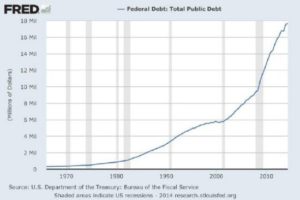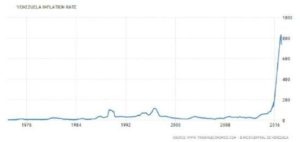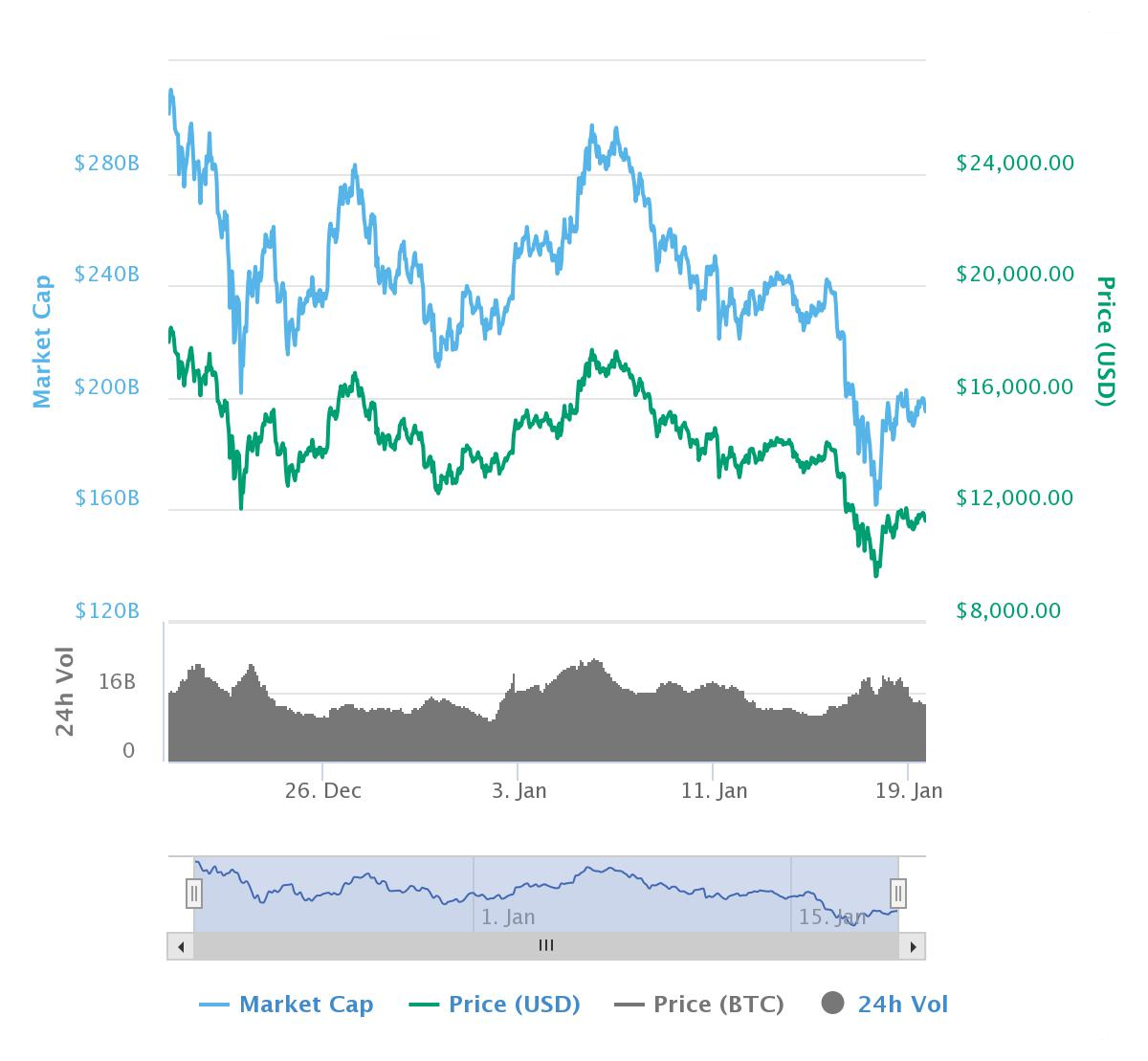http://deviantinvestor.com/9083/ready-for-barter-trade/
Guest Post from Clint Siegner, Money Metals Exchange
Let’s start with this fact; fiat (paper) currencies die – often spectacularly. That is why precious metals may someday be needed for barter and trade. Anyone who thinks it is silly to worry about such a thing is putting blind faith in Federal Reserve Notes.
MD: Fiat is a derogatory term, usually used by gold bugs who think precious metals are “sound” money. It is a slur against “real” money created by traders and used in a Medium of Exchange (MOE) process. The slur is valid for “improper” MOE processes (the only ones which currently exist in the wild … or anywhere for that matter) but it is totally invalid when referring to a “proper” MOE process as described here at Money Delusions. This opening comment is an overt admission that precious metals are not money …. but rather are something that must be resorted to when money fails.
The U.S. dollar is having a great run, no question. It will soon be 50 years since Nixon closed the gold window, thereby converting the dollar to a purely fiat currency. Five decades is longer than most purely fiat currencies survive.
MD: This is so silly. It implies that the dollar was not a fiat currency before it was proven to be (i.e. the myth that was there all along that it was backed by precious metals was exposed). The dollar has been fiat currency since its inception … and there’s nothing wrong with that. It is improper MOE processes that don’t survive. Try a proper one and it “will” survive.
Humans carry a normalcy bias. That helps explain why so many assume the unbacked Federal Reserve Note, which has served so long as our currency, will continue to serve in the future.
MD: Humans are traders. They know money for what it is … i.e. an in-process promise to complete a trade over time and space. Some create it themselves (e.g. when you buy a car with 60 monthly payments). Most just use it as the most common object in every simple barter exchange.
If you test that assumption, it quickly gets hard to defend.
MD: Nonsense. The so-called “backed” coins were removed from circulation at the beginning of 1965. Before that they contained 90% silver. After that they were just worthless tokens. If the “backing” had anything to do with their use as money, the new worthless tokens would not have traded for anything. The same is true when they took the myth “Silver Certificate” off the paper currency and replaced it with the true “Federal Reserve Note”. Nothing changed as far as traders were concerned.
Point to the exponential growth in U.S. debt, the unrestrained government spending throughout both Republican and Democratic administrations, and the extraordinary monetary policies of the Fed (particularly in the past decade) and reasonable people should acknowledge that the reign of “king dollar” is unlikely to last forever.
MD: The US debt has been exponentially increasing from the very beginning. It is the nature of any exponential curve, that in its early existence it looks flat. That’s because it early rate of increase is swamped by the scaling needed to accommodate the later rates driven by the exponent. Our money has exhibited about a 4% inflation rate for all time. It is what has funded our government. All taxes have been absorbed in paying tribute to the money changers who instituted that government.
Most people don’t know the first thing about the dark history of fiat currencies around the world. Governments use them to borrow and print without limits. Suffer no delusions – fiat currencies were invented for precisely that purpose. The gold in the treasury has never been sufficient for the wars, social programs, and graft which are the hallmarks of a growing government.
MD: Most people don’t care. People using money are traders. With a proper MOE process, so-called investors (and also savers) would use money to hold their wealth until they were ready to dispose of it. With an objective of a 2% annual leak, and a realized 4% annual leak, this doesn’t work. But for most trades (which are hand to mouth) it’s undetectable. You just instituted an increase in “minimum wage” every now and then to make people think they are keeping up.
America is no exception. Nixon slammed the gold window shut because nations – France in particular – saw the U.S. spending beyond its means and devaluing the dollar. So, our trading partners began swapping dollars for bullion. In order to stop the hemorrhaging of U.S. gold reserves, Nixon reneged on the commitment to redeem Federal Reserve Notes in gold.
MD: Actually France called the USA bluff. When Nixon “slammed the gold window” he removed the myth that the dollar was worth 1/35th an ounce of gold. In the real world it was trading for about 1/70th an ounce of gold. The French decided their would rather have their debts repaid at the rate they were incurred rather than the fraudulent rate the USA government was claiming. If a proper MOE process had been in place, and the money was in units of HULs (Hours of Unskilled Labor), this would not have happened. It is prima-facie evidence that gold is not money and can’t be used to back money. There’s only one ounce of it per human on earth … now about $2,000 … chump change.
Honest money in the form of gold, or currency redeemable in gold, imposes restraints that no expansionist government can abide – ours included.
The chart showing the growth of our national debt since Nixon broke the last remaining tie between the dollar and gold is hard to refute.

MD: These charts never show inflation from 1913 to 1970 … or from 1787 to 1913. The same rate of inflation is there, but just as this curve looks flat on the left, it would look flat if plotted all the way back to 1787. If the plot was honest it would have a log scale on the vertical and would appear as a straight line. Nothing happened in 1970.
Whether or not the federal government can be trusted to make good on its commitments over time is a serious question.
MD: There is no question at all. It will continue to inflate at 4%. That’s how it is funded. That’s how it will always be funded. Institute a “proper” MOE process and that funding becomes impossible. This is because a proper process “guarantees” zero inflation. Governments everywhere would have to resort to taxes for their funding and existence … and that means the banks would no longer get “tribute” (i.e. interest) from them. The governments and banks as we know them would cease to exist … and that would be a good thing.
It would be silly not to prepare for a collapse in confidence, and, by extension, a collapse in the dollar. And nobody should wait. Currency crises through history catch most people by surprise, then it is too late to prepare.
MD: No preparation is feasible. Look at Weimar Germany, Zimbabwe, and now Venezuela for what happens … whether you prepare or not. It would be better to institute a proper and competitive MOE process and let it be the governments and banks problem, and not the trader’s problem.
Governments are like the Ernest Hemingway character:
“How did you go bankrupt?”
“Two ways. Gradually, then suddenly.”
History is full of nations and currencies rolling slowly downhill for a while, then plummeting over the cliff.
You can show naysayers a picture of the recent hyperinflation in Venezuela:

MD: And it looks real dramatic. It’s like plotting an explosion after a pile of rags has been smoldering from spontaneous combustion for a long time.
Venezuelans who entered 2016 with all of their savings in bolivars probably didn’t know it, but they were in serious trouble. Within weeks they would be searching for scarce food with nothing to exchange but devalued banknotes – slips of paper which merchants suddenly loathed.
The above chart is based on “official” data from the Venezuelan central bank. The reality is even worse.
MD: Read “When Money Dies” by Adam Ferguson. Ponzi schemes have existed forever … even before Ponzi. You don’t have to tolerate. For darn sure you don’t have to “constitutionalize” them as we have done in the USA. And you won’t improve things at all by strangling traders with the nonsense that precious metals are money.
Grocers can’t keep enough food on the shelves because suppliers don’t want bolivars. Instead, much of the food is bought and sold in black and grey markets where people offer something more compelling in exchange.
Once lost, it is extraordinarily hard to restore confidence.
MD: Read the history. Weimar Germany was well on its way to forgetting about how it had been screwed by its elite within a year of the collapse. And it started all over again. Stupidity is pretty hard to eradicate. Replacing stupid with stupid (in this case declaring precious metal to money by edict) just moves the problem around.
The Venezuelan government, and their bolivar, are struggling to maintain any sort of legitimacy. Total collapse is all but assured.
Granted, the USA is not Venezuela. Our dollar is the world’s reserve currency and the U.S. is much larger and wealthier than that South American nation. But much of the difference boils down to scale and timing. Venezuela is simply ahead of the U.S. on the same road to national bankruptcy.
MD: The USA “is” Venezuela. The USA covertly caused this collapse of Venezuela. It was precipitated by Venezuela taking over the oil companies. The ultimate result was predictable. What they should have done is just charged them higher rates for their leases.
Absent a course correction, there is little reason to think we won’t arrive at the same destination – hyperinflation and disorder.
It is possible America can make reforms before it is too late. But even those who are optimistic about President Trump enacting change for the better, must admit it is very unlikely that he will ever get Congress to cooperate. And it is that august body which is responsible for spending and debt.
MD: The proper reform is found in instituted a “proper” MOE process to compete with the government process (i.e. dollar) we now use. It will drive the dollar out of existence. The government isn’t going to take the removal of their cash cow lightly. The solution is in education. The people need to be taught about a proper MOE process and its attributes: Zero inflation; zero interest to responsible traders; unrestrained media supply; removal of all monetary controls (and manipulation). The real problem is getting this knowledge into general circulation. This will neuter government and bank efforts to make it illegal. Nonsense from articles like this one is not helpful.
Federal debt and entitlement obligations have kept growing, regardless of which party is in control.
If the U.S. returns to honest money and limited government BEFORE a crisis, it may be the first nation in history to do so. Anybody who doesn’t like those odds would be wise to hold some gold and silver for a handful of good reasons. Having something to barter with is certainly one of them.
MD: “Returns to honest money”? When did it ever have anything different than the money we have now. Answer: Never. It’s just time to institute a “proper” MOE process. It has nothing to do with honest. It has to do with transparency and plain old common sense.
 Clint Siegner is a Director at Money Metals Exchange, the national precious metals company named 2015 “Dealer of the Year” in the United States by an independent global ratings group. A graduate of Linfield College in Oregon, Siegner puts his experience in business management along with his passion for personal liberty, limited government, and honest money into the development of Money Metals’ brand and reach. This includes writing extensively on the bullion markets and their intersection with policy and world affairs.
Clint Siegner is a Director at Money Metals Exchange, the national precious metals company named 2015 “Dealer of the Year” in the United States by an independent global ratings group. A graduate of Linfield College in Oregon, Siegner puts his experience in business management along with his passion for personal liberty, limited government, and honest money into the development of Money Metals’ brand and reach. This includes writing extensively on the bullion markets and their intersection with policy and world affairs.
Thanks to Money Metals Exchange
Gary Christenson
The Deviant Investor
MD: No thanks from Money Delusions. You don’t fight nonsense with nonsense.


 Cue much hand-wringing and gnashing of teeth in the crypto-commentariat. It’s neck-and-neck, but I think the “I-told-you-so” crowd has the edge over the “excuse-makers.”
Cue much hand-wringing and gnashing of teeth in the crypto-commentariat. It’s neck-and-neck, but I think the “I-told-you-so” crowd has the edge over the “excuse-makers.”

 Clint Siegner is a Director at
Clint Siegner is a Director at  The benefit which is derived from exchanging one commodity for another, arises, in all cases, from the commodity received, not from the commodity given. When one country exchanges, in other words, when one country traffics with another, the whole of its advantage consists in the commodities imported. It benefits by the importation, and by nothing else.
The benefit which is derived from exchanging one commodity for another, arises, in all cases, from the commodity received, not from the commodity given. When one country exchanges, in other words, when one country traffics with another, the whole of its advantage consists in the commodities imported. It benefits by the importation, and by nothing else.